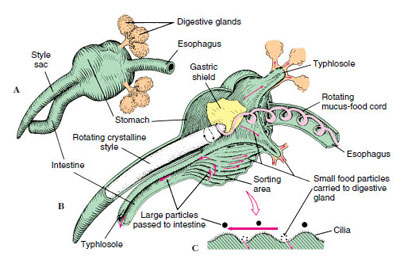
Eastern Oysters were once abundant in Barnegat Bay. Due to over harvesting and disease their numbers have been significantly reduced.
Oyster Lifecycle
Eastern Oyster Crassostrea virginica
In general, oyster reproduction in the wild is similar to the Northern Quahog (hard clam)
Introduction
The Eastern oyster can grow up to 10 inches in length and can live to approximately 20 years of age.
Oysters begin their lives as males.
They are protandric animals, meaning that they can change from male to female over the course of a lifetime.
At any one time, an oyster is either male or female.
Sperm cells are much smaller than eggs and require less metabolic to energy produce and usually they are male for the first year.
Reproduction
Fun Fact – “Spat” usually refers to a recently metamorphosed oyster, but the term may be applied to any small oyster.
Similarly, the term “seed oyster” may be given to oysters that are too small to harvest, but it generally refers to juvenile oysters larger than spat.
Spawning
When conditions are right, male oysters release sperm and females release unfertilized eggs into the bay. Fertilization takes place in the water column as sperm and egg unite.
As the fertilized egg develops the cells divide and the embryo grows.
With further development we see the growth of hair-like cilia and the embryo becomes a free-swimming larva known as a trocophore.
Next, the larva begins to develop a shell and foot. In this stage, the larva is called a veliger.The larval shell of the of the umbonate veliger has the characteristic shape of the oyster.
The last phase of the veliger stage is called the the pediveliger (ped = foot) stage. This is the final stage prior to settlement and eventual metamorphosis to juveniles.
Pediveligers have a well-developed foot that extends from the shell.
Settiing
Pediveligers settle to the bottom and can crawl short distances to find suitable sites for setting.
Setting occurs when the larva cements itself to a hard substrate (usually oyster shells) and metamorphoses into a tiny oyster called a spat.
Fun Fact – Oysters are active and grows in water temperature above 40° Fahrenheit. Below this temperature they shut down (hibernate).
Credits

